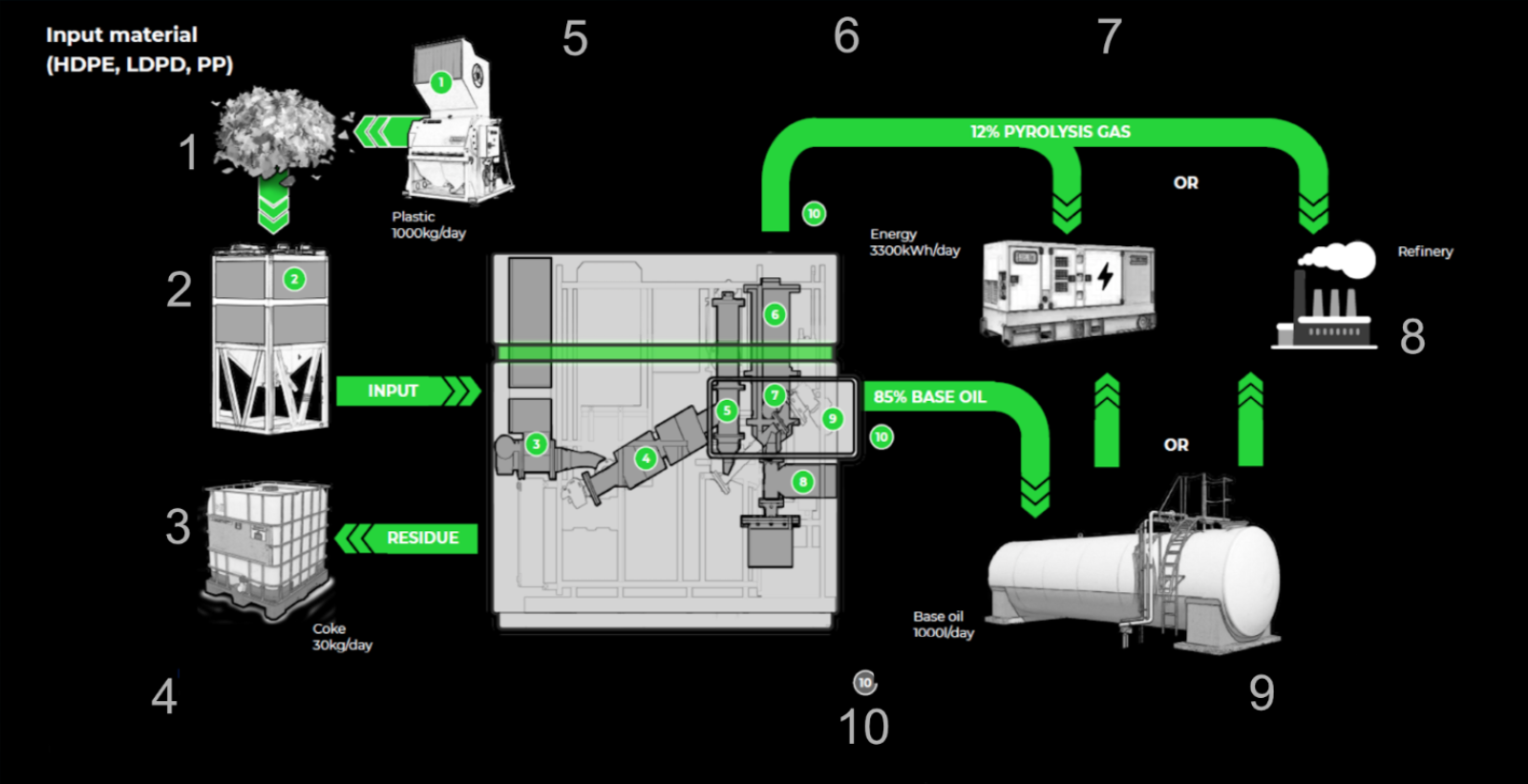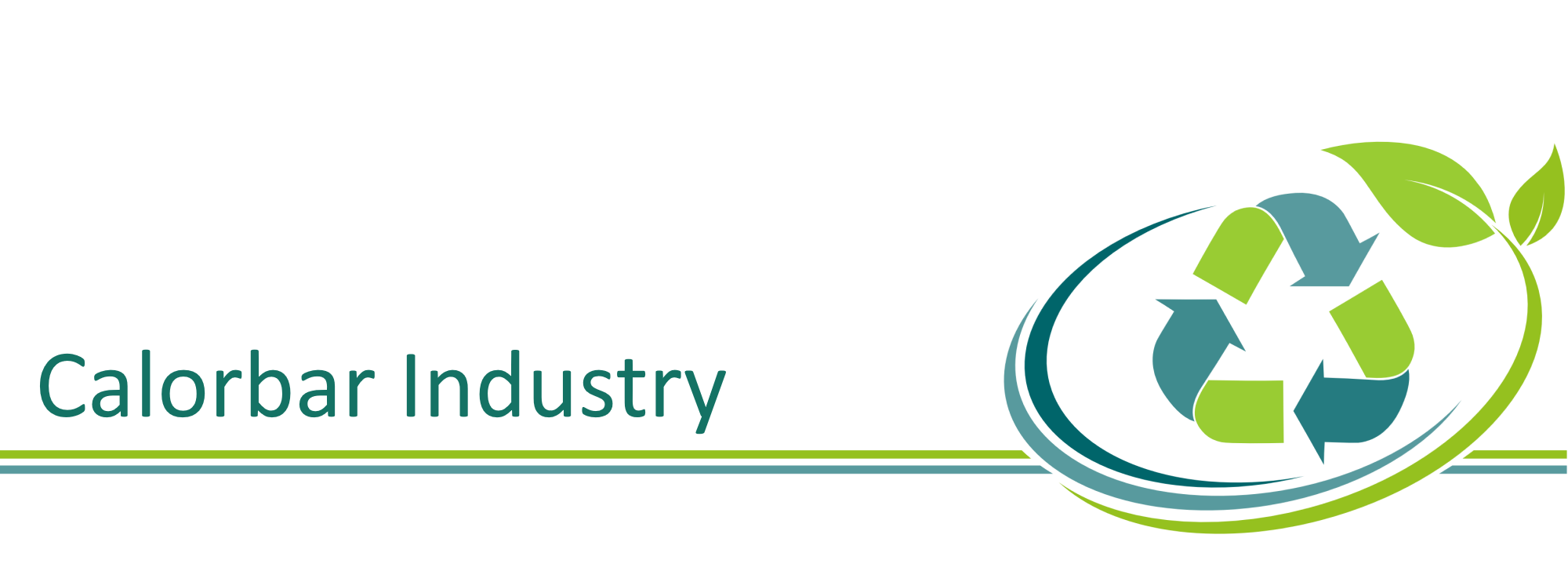MAIN COMPONENTS OF THE INSTALLATION

1. Cutting Mill
If the input material is too coarse, it can be crushed to a suitable grain size in a cutting mill
2. Buffer
In a silo the small sized substrates buffered e.g. for a daily requirement. From there a blower conveys the material to the intermediate storage above the feed hopper
3. Substrate Entry
By means of a stuffing screw, the material is introduced into the pyrolysis reactor in an airtight, demand-driven manner and melted
4. Pyrolisys reactor
In the reactor, the material is heated with constant movement at temperatures up to 500 °C, depolymerisation occurs i.e. cracking of the long hydrocarbon chains of the solid plastics into shorter chains of the liquid and gaseous products. Excess carbon atoms are split off and, together with the mineral impurities, from the solid residue.
5. Separator and residue discharge
In the separator the residues fall downwards, while the oil and the gas vapors rise upward and are conducted to condensation. The residues are conveyed via a cooling section into the gas-tight sealable residue container.
6. Stepped condensation
In several temperature stages, the condensable components of the pyrolysis vapors are obtained as oil or waxy products.
7. Cooling system
By means of an active cooling system (compression chiller), low cooling water flow temperatures can be reliably provided even at higher ambiant temperatures in order to also separate low-boiling components.
8. Filter and discharge
By means of pumps, the condensate mixture is passed through filters and then discharged from the system. The products can optionally be converted to electricity on site or supplied for external material or energetic use.
9. Control
The entire system is controlled in a highly automated manner. The system can be monitored by the operator on site or remotely via appropriate interfaces and, if necessary controlled.
10. Output and possible uses
The output of the machine contains 85% base oil, 12% pyrolysis gas and a small amount of residuals. The oil can be sold to the petrochemical industry as the main component of the output or it can be converted into energy by a special generator. The gas may be used to supply energy to the plant or be sold bottled.


